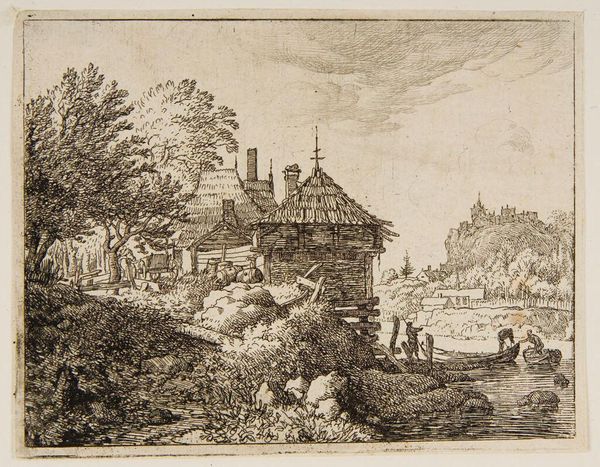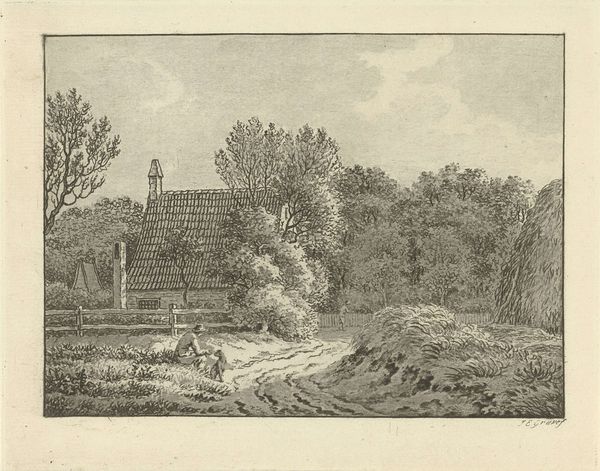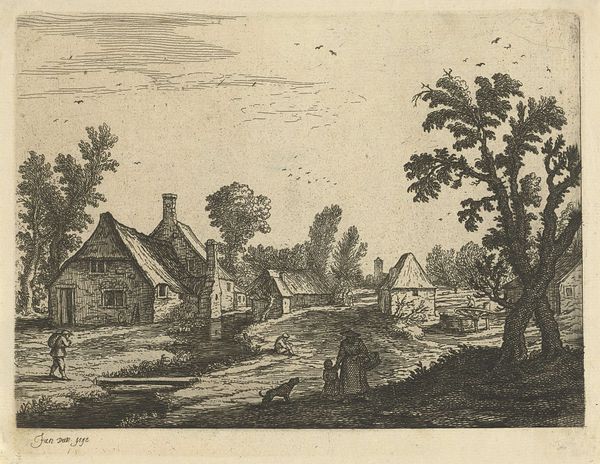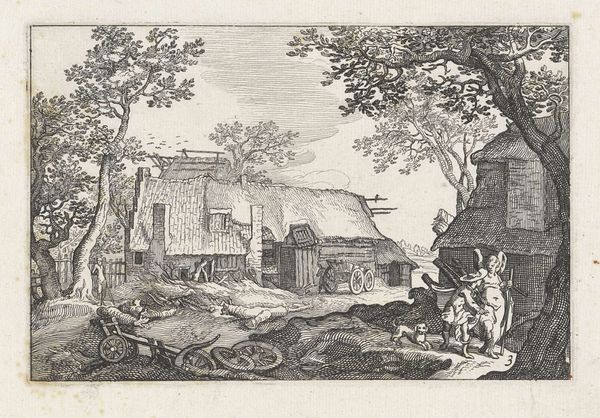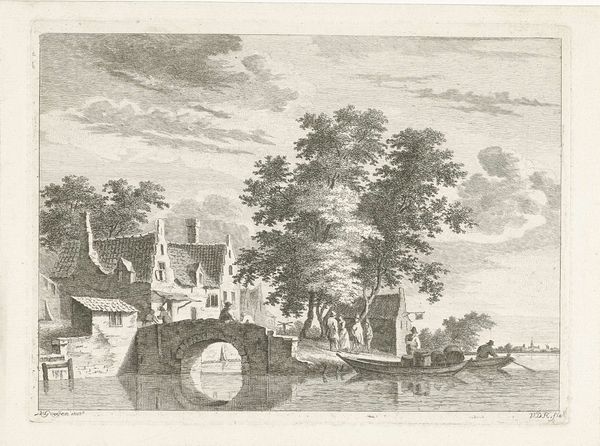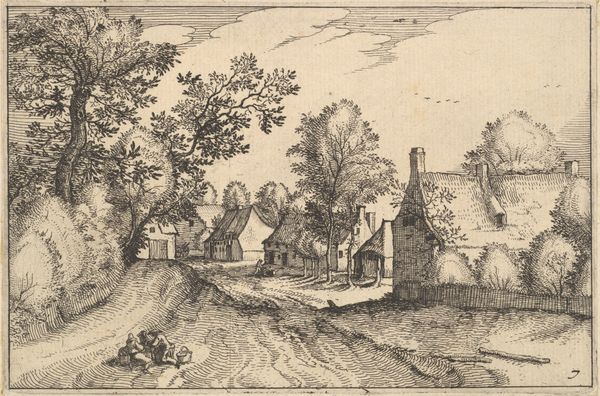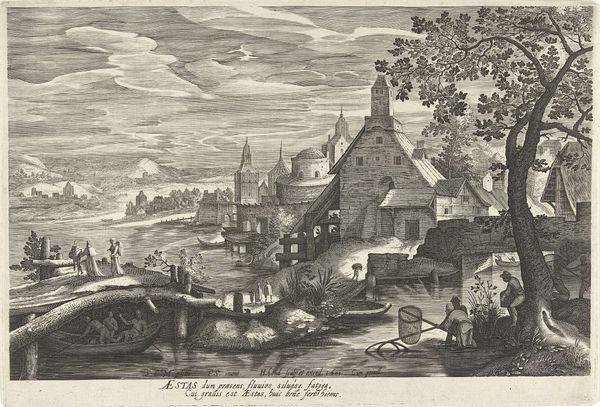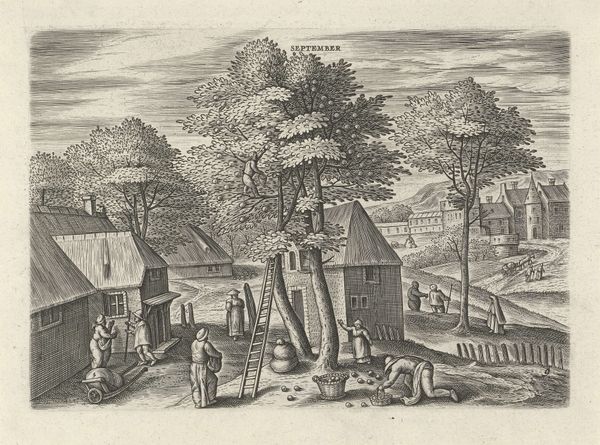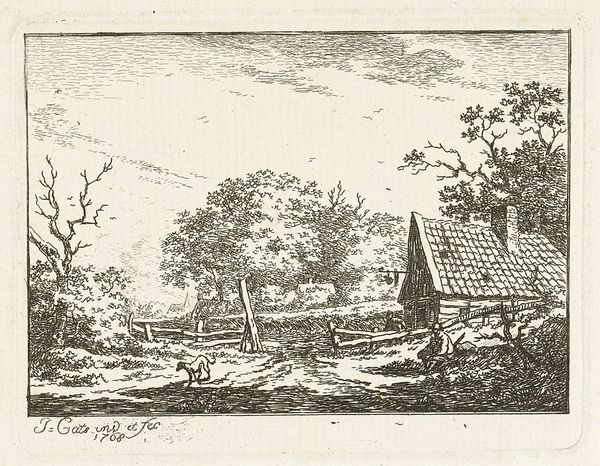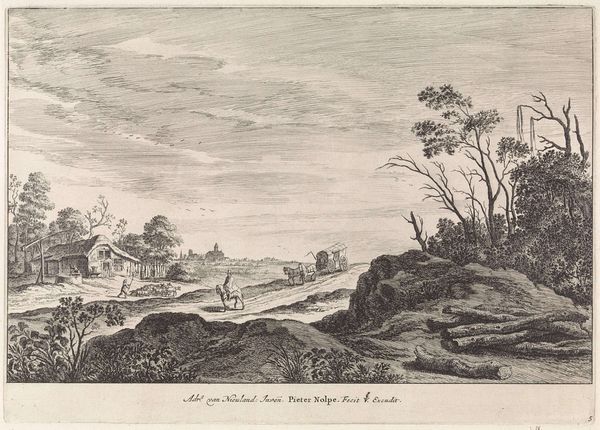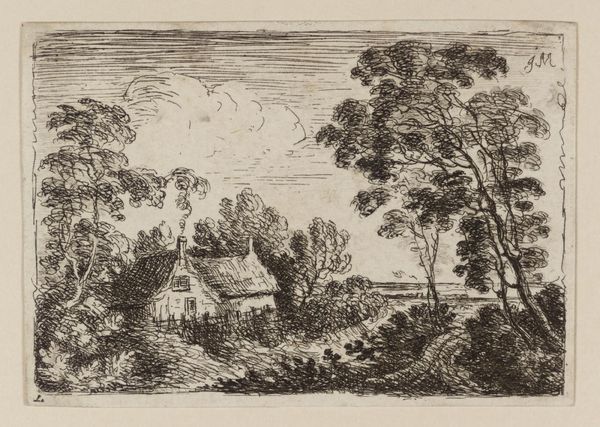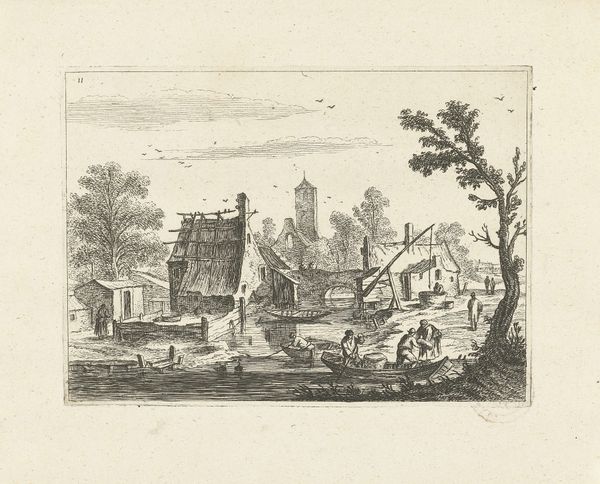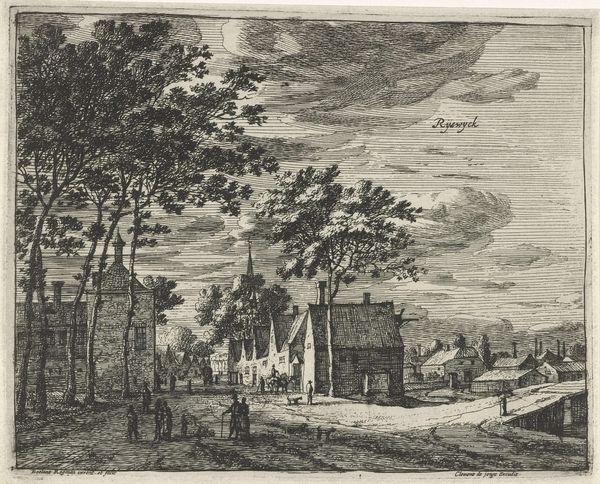
print, etching, engraving
#
baroque
#
dutch-golden-age
# print
#
pen illustration
#
pen sketch
#
etching
#
old engraving style
#
landscape
#
engraving
Dimensions: height 155 mm, width 207 mm
Copyright: Rijks Museum: Open Domain
Editor: This is “Lente,” a landscape etching and engraving made sometime between 1643 and 1720 by Hendrick Hondius I. It reminds me of a simpler time, a quiet rural village. What do you see in this piece? Curator: Indeed, its quietness speaks volumes. The artist’s chosen title, "Lente," the Dutch word for Spring, sets a symbolic stage. Consider how spring, culturally, embodies renewal and beginnings. Do you see visual cues suggesting that beyond the depicted buildings? Editor: Well, the foliage looks full and healthy, but the trees on the left appear gnarled. Curator: Exactly! Those twisting branches represent a transition from winter, perhaps? What feeling does that contrast create for you? Notice how Hondius, skilled in the emblem tradition, strategically uses animal imagery. Observe the swans and other birds depicted, and note their classical symbolism of rebirth. This invites us to consider cycles of time. Do you perceive how these symbols tap into a collective memory of the season's promise? Editor: I see that the smoke stacks suggest that industrialization is present even in what seems like a quiet landscape. Curator: Yes! So, this image is not so simple after all! Can you infer any meaning about society or people during that time based on the symbols used in this picture? Perhaps a visual commentary on changing times, capturing the interplay between nature and human progress, presented through the traditional symbolic lens of springtime. Editor: I hadn’t considered how much history could be embedded within a landscape like this! It definitely shows that a simple image can hold deep cultural meanings. Curator: Absolutely. The image makes one consider not just what is shown, but also what memories and knowledge an audience brings.
Comments
No comments
Be the first to comment and join the conversation on the ultimate creative platform.
